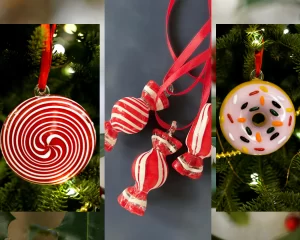
Grading and certification of lab-grown diamonds are crucial processes that provide consumers with valuable information about the diamond’s characteristics. Click here https://slgdiamonds.com/pages/2-carat-lab-grown-diamonds. Just like natural diamonds, lab-grown diamonds are assessed for their cut, color, clarity, and carat weight. Here’s how these aspects are evaluated:
- Cut:
The cut of a diamond refers to how well its facets interact with light, ultimately determining its brilliance and sparkle. The cut grade takes into account factors like proportions, symmetry, and polish. Lab-grown diamonds are graded for cut using a similar system to natural diamonds:
- Excellent: Reflects nearly all light, creating exceptional brilliance and fire.
- Very Good: Offers high levels of brilliance, with slight variations in light reflection.
- Good: Provides satisfactory brilliance but may show slightly less sparkle.
- Fair: Exhibits noticeable reductions in brilliance and sparkle.
- Poor: Displays significant light leakage, resulting in diminished brilliance.

- Color:
The color grade of a diamond assesses the presence of any noticeable hue. Lab-grown diamonds are graded on a scale that ranges from “D” (colorless) to “Z” (light yellow or brown):
- D-F: Colorless, showing no discernible color to the naked eye.
- G-J: Near-colorless, with minimal color visible to the naked eye.
- K-M: Lightly tinted, with increasing color presence.
- N-Z: Noticeable color, with shades of light yellow or brown.
- Clarity:
Clarity grading evaluates the presence of internal and external imperfections, known as inclusions and blemishes, respectively. Lab-grown diamonds are assessed using the same clarity scale as natural diamonds:
- FL (Flawless): No internal or external imperfections visible under 10x magnification.
- IF (Internally Flawless): No internal imperfections, but slight surface blemishes may be present.
- VVS1-VVS2 (Very, Very Slightly Included): Inclusions are extremely difficult to detect under 10x magnification.
- VS1-VS2 (Very Slightly Included): Minor inclusions that are challenging to see under 10x magnification.
- SI1-SI2 (Slightly Included): Inclusions that are noticeable under 10x magnification but not to the naked eye.
- I1-I3 (Included): Inclusions that are visible to the naked eye and may affect the diamond’s appearance and durability.
- Carat Weight:
Carat weight measures the size of the diamond and is a key factor in determining its value. One carat is equivalent to 0.2 grams. Lab-grown diamonds are weighed to determine their carat weight, just like natural diamonds.
Certification:
Certification for lab-grown diamonds is typically provided by recognized gemological laboratories such as the Gemological Institute of America (GIA) or the International Gemological Institute (IGI). These certificates include detailed information about the diamond’s cut, color, clarity, carat weight, dimensions, and other relevant characteristics. The certification process ensures transparency and helps buyers make informed decisions based on accurate and standardized information.
Conclusion
In conclusion, the quality and grading of lab-grown diamonds follow similar principles to natural diamonds. Understanding these grading criteria and the certification process empowers consumers to select lab-grown diamonds that match their preferences and desired characteristics. Click here https://slgdiamonds.com/pages/2-carat-lab-grown-diamonds.








